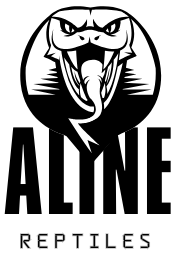Bearded dragons are fascinating reptiles, known for their calm demeanor and unique behaviors. However, their health can sometimes be difficult to assess, especially when it comes to subtle signs like tongue discoloration or dysfunction. An unhealthy bearded dragon tongue can be an indicator of underlying health issues, ranging from infections to nutritional deficiencies.
As a responsible pet owner, understanding the signs of an unhealthy tongue and taking proactive measures can make a significant difference in your reptile’s well-being. In this comprehensive guide, we’ll explore what a bearded dragon’s tongue should look like, the warning signs of health issues, potential causes, treatment options, and preventive measures.
Anatomy and Function of a Healthy Bearded Dragon Tongue

A healthy bearded dragon tongue plays a crucial role in their daily activities, including eating, sensing their environment, and regulating body functions. Understanding what a normal tongue looks like can help you identify abnormalities early.
| Feature | Description |
|---|---|
| Color | Normally pink with a pale, whitish tip. |
| Texture | Smooth and moist, without lesions or swelling. |
| Function | Aids in capturing food, tasting, and exploring surroundings. |
If your bearded dragon’s tongue starts to look different from its normal appearance, it might be a sign of underlying health problems.
Signs of an Unhealthy Bearded Dragon Tongue
Changes in tongue color, texture, and behavior can indicate various health concerns. Below are some key warning signs:
| Sign | Possible Causes |
| Blackened or Dark Tongue | Mouth rot, stress, or necrosis. |
| Bluish or Grayish Tongue | Circulatory problems, oxygen deprivation. |
| Pale or White Tongue | Anemia, nutritional deficiency. |
| Swollen Tongue | Infection, trauma, or allergic reaction. |
| Sores or Lesions | Injury from sharp objects, infections. |
| Excessive Saliva or Dryness | Dehydration, metabolic disorders. |
These symptoms should not be ignored, as they can indicate serious health issues that require veterinary attention.
Common Causes of Tongue Health Issues in Bearded Dragons
A variety of factors can contribute to tongue-related problems. Here are the most common causes:
1. Mouth Rot (Infectious Stomatitis)
One of the most common causes of tongue discoloration or swelling is mouth rot, a bacterial infection that affects the mouth and gums.
Symptoms:
- Swollen tongue and gums
- Blackened or dark patches inside the mouth
- Pus or discharge
- Difficulty eating
Causes:
- Poor hygiene and unclean enclosures
- Stress and weakened immune system
- Untreated oral injuries
Treatment:
- Veterinary-prescribed antibiotics
- Cleaning the mouth with antiseptic solutions
- Improving hygiene in the enclosure
2. Nutritional Deficiencies
A lack of essential nutrients can lead to changes in tongue color and function. Calcium and vitamin deficiencies are the most common culprits.
| Nutrient Deficiency | Effects on Tongue Health |
| Calcium | Pale tongue, weak jawbones. |
| Vitamin A | Dry, rough, and swollen tongue. |
| Iron | Anemia, leading to a white or pale tongue. |
Ensuring a well-balanced diet with calcium and vitamin supplements is crucial for preventing deficiencies.
3. Dehydration
Bearded dragons need proper hydration to maintain oral health. A dry tongue can indicate dehydration, which may lead to severe health problems.
Signs of Dehydration:
- Sticky or dry tongue
- Sunken eyes
- Wrinkled skin
Solution:
- Provide fresh water daily
- Offer hydrating foods such as cucumbers and leafy greens
- Mist your bearded dragon lightly to encourage water intake
4. Trauma and Injuries
Physical injuries from biting prey, sharp objects in the enclosure, or aggressive interactions can damage the tongue.
Preventive Measures:
- Remove any sharp or rough surfaces from the tank
- Avoid feeding overly large or aggressive live prey
5. Fungal or Bacterial Infections
Fungal infections can cause white or gray patches on the tongue, while bacterial infections may lead to swelling and discoloration.
Treatment:
- Veterinary-prescribed antifungal or antibacterial medication
- Regularly cleaning the enclosure to prevent microbial growth
When to Consult a Veterinarian

If you notice any unusual changes in your bearded dragon’s tongue, it’s best to consult a reptile veterinarian immediately. Seek medical attention if:
- The tongue remains discolored for more than 24 hours.
- There are visible sores, lesions, or swelling.
- Your dragon stops eating or has difficulty swallowing.
- There’s excessive drooling, pus, or a foul odor from the mouth.
Early detection and treatment can prevent minor issues from developing into life-threatening conditions.
Preventative Measures for Optimal Tongue Health
Maintaining your bearded dragon’s overall health can prevent many tongue-related issues. Here’s what you can do:
| Preventive Action | Benefit |
| Maintain a clean enclosure | Reduces the risk of infections. |
| Provide a balanced diet | Prevents nutritional deficiencies. |
| Monitor hydration | Keeps the tongue moist and healthy. |
| Regular vet check-ups | Early detection of potential issues. |
| Remove sharp objects | Prevents injuries. |
By following these guidelines, you can significantly reduce the risk of tongue-related health problems in your bearded dragon.
Conclusion
An unhealthy bearded dragon tongue can be an early indicator of serious health issues, ranging from infections and injuries to nutritional deficiencies. Recognizing the warning signs and taking appropriate action can ensure your reptile stays healthy and comfortable.
By maintaining proper husbandry, providing a well-balanced diet, and seeking veterinary care when needed, you can help your bearded dragon live a long and happy life. Stay observant, proactive, and always prioritize their well-being.

